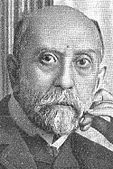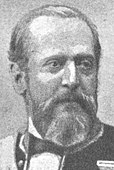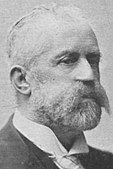| |||||||||||||||||||||||||||||||||||||||||||||||||||||||||||||||||||||||||||||
All 447 seats in the Congress of Deputies and 180 (of 360) seats in the Senate 224 seats needed for a majority in the Congress of Deputies | |||||||||||||||||||||||||||||||||||||||||||||||||||||||||||||||||||||||||||||
|---|---|---|---|---|---|---|---|---|---|---|---|---|---|---|---|---|---|---|---|---|---|---|---|---|---|---|---|---|---|---|---|---|---|---|---|---|---|---|---|---|---|---|---|---|---|---|---|---|---|---|---|---|---|---|---|---|---|---|---|---|---|---|---|---|---|---|---|---|---|---|---|---|---|---|---|---|---|
| |||||||||||||||||||||||||||||||||||||||||||||||||||||||||||||||||||||||||||||
 Election results by Congress of Deputies electoral constituency and district Election results by Congress of Deputies electoral constituency and district | |||||||||||||||||||||||||||||||||||||||||||||||||||||||||||||||||||||||||||||
| |||||||||||||||||||||||||||||||||||||||||||||||||||||||||||||||||||||||||||||
The 1898 Spanish general election was held on Sunday, 27 March (for the Congress of Deputies) and on Sunday, 10 April 1898 (for the Senate), to elect the 8th Cortes of the Kingdom of Spain in the Restoration period. All 445 seats in the Congress of Deputies (plus two special districts) were up for election, as well as 180 of 360 seats in the Senate.
The election was called amid a period of political unstability following the assassination of previous prime minister Antonio Cánovas del Castillo on 8 August 1897 by Italian anarchist Michele Angiolillo and the brief premiership of Marcelo Azcárraga. Respecting the turno system, Queen Regent Maria Christina appointed a new government under Liberal leader Práxedes Mateo Sagasta on 4 October 1897, tasking them with the formation of a new majority. In the wake of Cánovas's death, the Conservative Party was left in disarray, split between Francisco Silvela's Conservative Union, a faction led by Duke of Tetuán Carlos O'Donnell and Francisco Romero Robledo's re-established Liberal Reformist Party. The result of the election was a Liberal majority in both chambers.
This would be the last Spanish general election to be held in Cuba and Puerto Rico, as the Spanish–American War, which would start only a few weeks after the election, would lead to the loss of all Spanish colonies in the Caribbean and the Pacific.
Overview
Electoral system
The Spanish Cortes were envisaged as "co-legislative bodies", based on a nearly perfect bicameral system. Both the Congress of Deputies and the Senate had legislative, control and budgetary functions, sharing equal powers except for laws on contributions or public credit, where the Congress had preeminence. Voting for the Cortes was on the basis of universal manhood suffrage, which comprised all national males over 25 years of age, having at least a two-year residency in a municipality and in full enjoyment of their civil rights. Following a 1897 reform, universal manhood suffrage was also extended to Cuba and Puerto Rico.
For the Congress of Deputies, 116 seats were elected using a partial block voting system in 34 multi-member constituencies, with the remaining 329 being elected under a one-round first-past-the-post system in single-member districts. Candidates winning a plurality in each constituency were elected. In constituencies electing eight seats or more, electors could vote for no more than three candidates less than the number of seats to be allocated; in those with more than four seats and up to eight, for no more than two less; in those with more than one seat and up to four, for no more than one less; and for one candidate in single-member districts. The Congress was entitled to one member per each 50,000 inhabitants, with each multi-member constituency being allocated a fixed number of seats. Additionally, literary universities, economic societies of Friends of the Country and officially organized chambers of commerce, industry and agriculture were entitled to one seat per each 5,000 registered voters that they comprised, which resulted in two additional special districts for the 1898 election. The law also provided for by-elections to fill seats vacated throughout the legislature.
As a result of the aforementioned allocation, each Congress multi-member constituency was entitled the following seats:
| Seats | Constituencies |
|---|---|
| 8 | Madrid |
| 6 | Havana |
| 5 | Barcelona, Palma |
| 4 | Santa Clara, Seville |
| 3 | Alicante, Almería, Badajoz, Burgos, Cádiz, Cartagena, Córdoba, Granada, Jaén, Jerez de la Frontera, La Coruña, Lugo, Málaga, Matanzas, Mayagüez, Murcia, Oviedo, Pamplona, Pinar del Río, Ponce, San Juan Bautista, Santa Cruz de Tenerife, Santander, Santiago de Cuba, Tarragona, Valencia, Valladolid, Zaragoza |
For the Senate, 180 seats were indirectly elected by the local councils and major taxpayers, with electors voting for delegates instead of senators. Elected delegates—equivalent in number to one-sixth of the councillors in each local council—would then vote for senators using a write-in, two-round majority voting system. The provinces of Álava, Albacete, Ávila, Biscay, Cuenca, Guadalajara, Guipúzcoa, Huelva, Logroño, Matanzas, Palencia, Pinar del Río, Puerto Príncipe, Santa Clara, Santander, Santiago de Cuba, Segovia, Soria, Teruel, Valladolid and Zamora were allocated two seats each, whereas each of the remaining provinces was allocated three seats, for a total of 147. The remaining 33 were allocated to special districts comprising a number of institutions, electing one seat each—the archdioceses of Burgos, Granada, Santiago de Compostela, Santiago de Cuba, Seville, Tarragona, Toledo, Valencia, Valladolid and Zaragoza; the Royal Spanish Academy; the royal academies of History, Fine Arts of San Fernando, Exact and Natural Sciences, Moral and Political Sciences and Medicine; the universities of Madrid, Barcelona, Granada, Havana, Oviedo, Salamanca, Santiago, Seville, Valencia, Valladolid and Zaragoza; and the economic societies of Friends of the Country from Madrid, Barcelona, Havana–Puerto Rico, León, Seville and Valencia. An additional 180 seats comprised senators in their own right—the Monarch's offspring and the heir apparent once coming of age; Grandees of Spain of the first class; Captain Generals of the Army and the Navy Admiral; the Patriarch of the Indies and archbishops; and the presidents of the Council of State, the Supreme Court, the Court of Auditors, the Supreme War Council and the Supreme Council of the Navy, after two years of service—as well as senators for life (who were appointed by the Monarch).
Election date
The term of each chamber of the Cortes—the Congress and one-half of the elective part of the Senate—expired five years from the date of their previous election, unless they were dissolved earlier. The previous Congress and Senate elections were held on 12 and 26 April 1896, which meant that the legislature's terms would have expired on 12 and 26 April 1901, respectively. The monarch had the prerogative to dissolve both chambers at any given time—either jointly or separately—and call a snap election. There was no constitutional requirement for concurrent elections to the Congress and the Senate, nor for the elective part of the Senate to be renewed in its entirety except in the case that a full dissolution was agreed by the monarch. Still, there was only one case of a separate election (for the Senate in 1877) and no half-Senate elections taking place under the 1876 Constitution.
The Cortes were officially dissolved on 26 February 1898, with the dissolution decree setting the election dates for 27 March (for the Congress) and 10 April 1898 (for the Senate) and scheduling for both chambers to reconvene on 25 April.
Background

The Spanish Constitution of 1876 enshrined Spain as a constitutional monarchy, awarding the monarch the right of legislative initiative together with the bicameral Cortes; the capacity to veto laws passed by the legislative body; the power to appoint senators and government ministers; as well as the title of commander-in-chief of the army and navy. The monarch would play a key role in the system of el turno pacífico (English: the Peaceful Turn) by appointing and dismissing governments and allowing the opposition to take power. Under this informal system, the major political parties at the time, the Conservatives and the Liberals—characterized as elite parties with loose structures dominated by internal factions, each led by powerful individuals—alternated in power by means of election rigging, which they achieved through the encasillado, assignating the seats in the general elections before they were held by using the links between the Ministry of Governance, the provincial civil governors and the local bosses (caciques) to ensure victory and exclude minor parties from the power sharing. The result was "a liberal system without democracy".
The last government of Antonio Cánovas del Castillo (1895–1897) had seen an increase in anarchist activity, with the Barcelona Corpus Christi procession bombing in 7 June 1896 and its consequences dominating the political landscape. Those suspect and arrested for the bombing were tried in the military Montjuïc Castle (the Montjuïc trials), amid accusations of forced confessions through torture. A new anti-terrorist law was approved that year and applied retroactively against the acquitted prisoners, who were deported out of the country. Cánovas' role in the trials and the political repression following the bombings would ultimately lead to his assassination on 8 August 1897 by anarchist Michele Angiolillo. This period also saw the breakout of the Philippine Revolution in August 1896.
Following Cánovas' death, Marcelo Azcárraga took the role of prime minister in the interim until power was handed by Queen Regent Maria Christina to Práxedes Mateo Sagasta and his Liberal Party in October that year. This episode threw the Conservative Party into disarray: most party members acknowledged Francisco Silvela as new leader and joined his Conservative Union; others—considering themselves as the true heirs of Cánovas' ideas—joined Duke of Tetuán Carlos O'Donnell's Tetuanist faction; finally, Francisco Romero Robledo re-established his Liberal Reformist Party and broke away in opposition to Silvela's leadership.
Results
Congress of Deputies
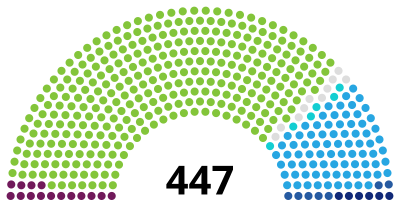 | ||||
| Parties and alliances | Popular vote | Seats | ||
|---|---|---|---|---|
| Votes | % | |||
| Liberal Party (PL) | 324 | |||
| Conservative Union (UC) | 79 | |||
| Republican Fusion (FR) | 15 | |||
| Tetuanist Conservatives (T) | 7 | |||
| Liberal Reformist Party (PLR) | 6 | |||
| Traditionalist Communion (Carlist) (CT) | 6 | |||
| Independents (INDEP) | 10 | |||
| Total | 447 | |||
| Votes cast / turnout | ||||
| Abstentions | ||||
| Registered voters | ||||
| Sources | ||||
| |||||||||||||||||||||||||||||||||||||||||||||
Senate
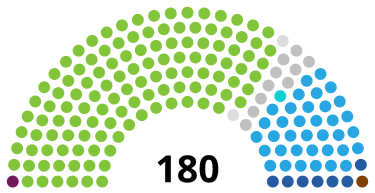 | ||
| Parties and alliances | Seats | |
|---|---|---|
| Liberal Party (PL) | 122 | |
| Conservative Union (UC) | 36 | |
| Tetuanist Conservatives (T) | 7 | |
| Republican Fusion (FR) | 1 | |
| Liberal Reformist Party (PLR) | 1 | |
| Integrist Party (PI) | 1 | |
| Independents (INDEP) | 2 | |
| Archbishops (ARCH) | 10 | |
| Total elective seats | 180 | |
| Sources | ||
| ||||||||||||||||||||||||||||||||||||||||||||||||||
Distribution by group
| Group | Parties and alliances | C | S | Total | ||
|---|---|---|---|---|---|---|
| PL | Liberal Party (PL) | 285 | 108 | 446 | ||
| Autonomist Liberal Party (PLA) | 21 | 5 | ||||
| Unconditional Spanish Party (PIE) | 10 | 1 | ||||
| Puerto Rican Autonomist Party (PAP) | 6 | 1 | ||||
| Constitutional Union of Cuba (UCC) | 1 | 5 | ||||
| Basque Dynastics (Urquijist) (DV) | 1 | 2 | ||||
| UC | Conservative Union (UC) | 74 | 33 | 115 | ||
| Constitutional Union of Cuba (UCC) | 5 | 2 | ||||
| Unconditional Spanish Party (PIE) | 0 | 1 | ||||
| FR | National Republican Party (PRN) | 9 | 1 | 16 | ||
| Independent Possibilists (P.IND) | 3 | 0 | ||||
| Centralist Republican Party (PRC) | 2 | 0 | ||||
| Blasquist Republicans (RB) | 1 | 0 | ||||
| T | Liberal Conservative Party (PLC) | 7 | 7 | 14 | ||
| PLR | Liberal Reformist Party (PLR) | 6 | 1 | 7 | ||
| CT | Traditionalist Communion (Carlist) (CT) | 6 | 0 | 6 | ||
| PI | Integrist Party (PI) | 0 | 1 | 1 | ||
| INDEP | Independents (INDEP) | 9 | 2 | 12 | ||
| Independent Catholics (CAT) | 1 | 0 | ||||
| ARCH | Archbishops (ARCH) | 0 | 10 | 10 | ||
| Total | 447 | 180 | 627 | |||
See also
Notes
- Results for PLC in the 1896 election.
References
- ^ Constitución de la Monarquía Española (PDF) (Constitution) (in Spanish). 30 June 1876. Retrieved 19 August 2022.
- "El Senado en la historia constitucional española". Senate of Spain (in Spanish). Retrieved 26 December 2016.
- García Muñoz 2002, pp. 106–107.
- Carreras de Odriozola & Tafunell Sambola 2005, p. 1077.
- "Ley Electoral de 26 de Junio de 1890. Adaptación para las Islas de Cuba y Puerto Rico" (PDF). Gaceta de Madrid (in Spanish) (330). Agencia Estatal Boletín Oficial del Estado: 626–629. 26 November 1897.
- "Real decreto dictando reglas para la formación del censo en la isla de Cuba" (PDF). Gaceta de Madrid (in Spanish) (365). Agencia Estatal Boletín Oficial del Estado: 995. 31 December 1897.
- Ley electoral de los Diputados a Cortes (PDF) (Law) (in Spanish). 28 December 1878. Retrieved 19 August 2022.
- ^ Ley electoral para Diputados a Cortes (PDF) (Law) (in Spanish). 26 June 1890. Retrieved 19 August 2022.
- Ley mandando que los distritos para las elecciones de Diputados á Córtes sean los que se expresan en la división adjunta (PDF) (Law) (in Spanish). 1 January 1871. Retrieved 21 August 2022.
- Ley dividiendo la provincia de Guipúzcoa en distritos para la elección de Diputados a Cortes (PDF) (Law) (in Spanish). 23 June 1885. Retrieved 6 May 2023.
- Ley dividiendo el distrito electoral de Tarrasa en dos, que se denominarán de Tarrasa y de Sabadell (PDF) (Law) (in Spanish). 18 January 1887. Retrieved 6 May 2023.
- Ley fijando la división de la provincia de Alava en distritos electorales para Diputados á Cortes (PDF) (Law) (in Spanish). 10 July 1888. Retrieved 6 May 2023.
- "Real decreto disponiendo que mientras no se publique nueva ley Electoral rija en la isla de Cuba la división en circunscripciones y distritos para la elección de Diputados á Cortes aprobada en el Congreso en la forma que se expresa" (PDF). Gaceta de Madrid (in Spanish) (354). Agencia Estatal Boletín Oficial del Estado: 907–908. 20 December 1890.
- "Real decreto declarando subsistente la división territorial para elecciones de Diputados á Cortes en las islas de Cuba y Puerto Rico, establecida por Real decreto de 18 de Diciembre de 1890" (PDF). Gaceta de Madrid (in Spanish) (363). Agencia Estatal Boletín Oficial del Estado: 964. 28 December 1892.
- Leyes aprobando la división electoral de las provincias de León y Vizcaya (PDF) (Law) (in Spanish). 2 August 1895. Retrieved 6 May 2023.
- ^ Ley electoral de Senadores (PDF) (Law) (in Spanish). 8 February 1877. Retrieved 19 August 2022.
- Ley dictando reglas para la elección de Senadores en las islas de Cuba y Puerto Rico (PDF) (Law) (in Spanish). 9 January 1879. Retrieved 19 August 2022.
- "Real decreto determinando el número de Senadores que habrán de elegirse en cada una de las provincias con motivo de las próximas elecciones" (PDF). Gaceta de Madrid (in Spanish) (184). Agencia Estatal Boletín Oficial del Estado: 23. 3 July 1881.
- "Real decreto declarando disueltos el Congreso de los Diputados y la parte electiva del Senado, y disponiendo que las Cortes se reúnan en Madrid el 25 de Abril próximo" (PDF). Gaceta de Madrid (in Spanish) (58). Agencia Estatal Boletín Oficial del Estado: 685. 27 February 1898.
- Martorell Linares 1997, pp. 139–143.
- Martínez Relanzón 2017, pp. 147–148.
- "La Restauración borbónica. Implantación y afianzamiento de un nuevo sistema político (1874-1902)". TocaSociales.com (in Spanish). Retrieved 4 January 2025.
- Avilés Farré, Elizalde Pérez-Grueso & Sueiro Seoane 2002, pp. 106–107.
- Avilés Farré & Herrerín López 2008, pp. 121–131.
- De la Santa Cinta, Joaquín (30 August 2017). "Presidentes del Consejo de Ministros durante la Regencia de María Cristina de Habsburgo-Lorena: Antonio Cánovas del Castillo por última vez y Marcelo Azcárraga Palmero". El Correo de Pozuelo (in Spanish). Retrieved 4 May 2023.
- Maestre Rosa 1973, p. 213.
- López Domínguez 1976, pp. 537–559.
- Armengol i Segú & Varela Ortega 2001, pp. 655–776.
- "En provincias. Datos oficiales". National Library of Spain (in Spanish). El Día. 28 March 1898. Retrieved 9 September 2022.
- "Las elecciones en Madrid y en provincias". National Library of Spain (in Spanish). La Iberia. 28 March 1898. Retrieved 9 September 2022.
- "Datos oficiales". National Library of Spain (in Spanish). El Liberal. 28 March 1898. Retrieved 9 September 2022.
- "Las elecciones". National Library of Spain (in Spanish). La Izquierda Dinástica. 28 March 1898. Retrieved 9 September 2022.
- "Elecciones". National Library of Spain (in Spanish). El Siglo Futuro. 28 March 1898. Retrieved 9 September 2022.
- "Las elecciones en Cuba". National Library of Spain (in Spanish). La Iberia. 29 March 1898. Retrieved 9 September 2022.
- "Las elecciones. Más datos oficiales". National Library of Spain (in Spanish). El Día. 29 March 1898. Retrieved 9 September 2022.
- "Elecciones. Pormenores oficiales". National Library of Spain (in Spanish). El Siglo Futuro. 29 March 1898. Retrieved 9 September 2022.
- "Diputados electos". National Library of Spain (in Spanish). El Heraldo de Madrid. 29 March 1898. Retrieved 11 September 2022.
- "Las elecciones". National Library of Spain (in Spanish). La Época. 29 March 1898. Retrieved 13 September 2022.
- "Mes de marzo. Día 27. Elecciones a diputados a Cortes". National Library of Spain (in Spanish). El Año Político. 1 January 1899. Retrieved 16 April 2022.
- "Las elecciones". National Library of Spain (in Spanish). El Globo. 11 April 1898. Retrieved 16 April 2022.
- "Elecciones de senadores". National Library of Spain (in Spanish). El Liberal. 11 April 1898. Retrieved 16 April 2022.
- "Elecciones de senadores". National Library of Spain (in Spanish). La Iberia. 12 April 1898. Retrieved 16 April 2022.
- "Las elecciones". National Library of Spain (in Spanish). El Globo. 12 April 1898. Retrieved 16 April 2022.
- "Los senadores". National Library of Spain (in Spanish). El Imparcial. 13 April 1898. Retrieved 16 April 2022.
- "Los senadores por Canarias". National Library of Spain (in Spanish). La Época. 14 April 1898. Retrieved 16 April 2022.
- "Academias, archivos, bibliotecas y museos". National Library of Spain (in Spanish). Gaceta de Instrucción Pública. 23 April 1898. Retrieved 16 April 2022.
- "Mes de abril. Día 10. Elecciones de Senadores". National Library of Spain (in Spanish). El año político. 1 January 1899. Retrieved 16 April 2022.
Bibliography
- Fernández Almagro, Melchor (1943). "Las Cortes del siglo XIX y la práctica electoral". Revista de Estudios Políticos (in Spanish) (9–10): 383–419. ISSN 0048-7694. Retrieved 16 December 2020.
- Maestre Rosa, Julio (1973). "Francisco Silvela y su liberalismo regeneracionista". Revista de Estudios Políticos (in Spanish) (187): 191–226. ISSN 0048-7694. Retrieved 30 August 2022.
- López Domínguez, José María (1976). Elecciones y partidos políticos de Puerto Rico: 1809-1898 (PDF) (Thesis) (in Spanish). Vol. 1. Puerto Rico: Complutense University of Madrid. Retrieved 11 September 2022.
- Martorell Linares, Miguel Ángel (1997). "La crisis parlamentaria de 1913-1917. La quiebra del sistema de relaciones parlamentarias de la Restauración". Revista de Estudios Políticos (in Spanish) (96). Madrid: Centro de Estudios Constitucionales: 137–161.
- Martínez Ruiz, Enrique; Maqueda Abreu, Consuelo; De Diego, Emilio (1999). Atlas histórico de España (in Spanish). Vol. 2. Bilbao: Ediciones KAL. pp. 109–120. ISBN 9788470903502.
- Roldán de Montaud, Inés (1999). "Política y elecciones en Cuba durante la restauración" (PDF). Revista de Estudios Políticos (in Spanish) (104): 245–287. Retrieved 19 December 2020.
- Armengol i Segú, Josep; Varela Ortega, José (2001). El poder de la influencia: geografía del caciquismo en España (1875-1923) (in Spanish). Madrid: Marcial Pons Historia. pp. 655–776. ISBN 9788425911521.
- Avilés Farré, Juan; Elizalde Pérez-Grueso, María Dolores; Sueiro Seoane, Susana (2002). Historia política de España, 1875-1939 (in Spanish). Vol. 1. Madrid: Ediciones Istmo. ISBN 9788470903205.
- García Muñoz, Montserrat (2002). "La documentación electoral y el fichero histórico de diputados". Revista General de Información y Documentación (in Spanish). 12 (1): 93–137. ISSN 1132-1873. Retrieved 13 September 2020.
- Carreras de Odriozola, Albert; Tafunell Sambola, Xavier (2005) . Estadísticas históricas de España, siglos XIX-XX (PDF) (in Spanish). Vol. 1 (II ed.). Bilbao: Fundación BBVA. pp. 1072–1097. ISBN 84-96515-00-1. Archived from the original (PDF) on 24 September 2015.
- Avilés Farré, Juan; Herrerín López, Ángel (2008). El nacimiento del terrorismo en Occidente: Anarquía, nihilismo y violencia revolucionaria (in Spanish). Madrid: Siglo XXI de España Editores. ISBN 9788432315091.
- Martínez Relanzón, Alejandro (2017). "Political Modernization in Spain Between 1876 and 1923". Annales Universitatis Mariae Curie-Sklodowska, sectio K. 24 (1). Madrid: Maria Curie-Skłodowska University: 145–154. doi:10.17951/k.2017.24.1.145. S2CID 159328027.
| General elections |
|
|---|---|
| Presidential elections | |
| European elections | |
| Local elections | |
| Regional elections | |
| Referendums | |
| |


